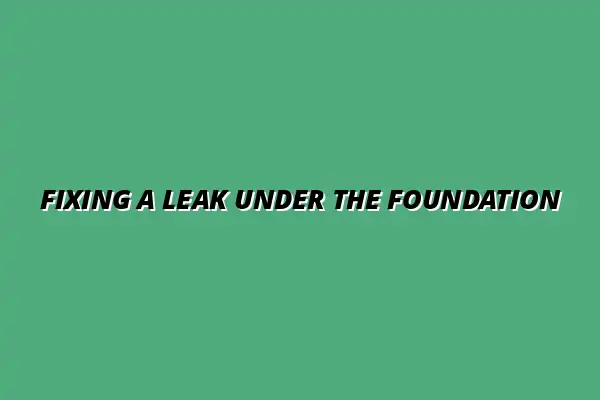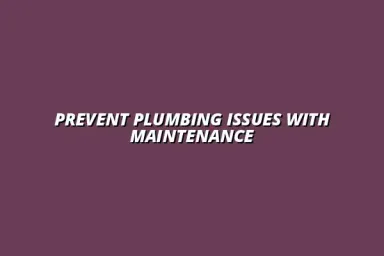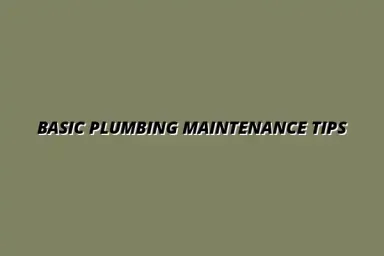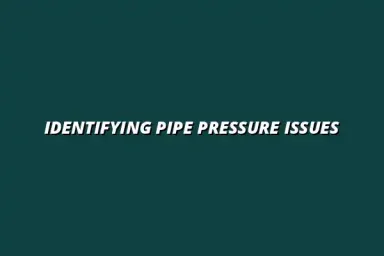Identifying Signs of a Leak Under the Foundation
Recognizing signs of a leak under your foundation is crucial for maintaining the integrity of your home. A foundation leak can lead to severe structural damage if not addressed promptly. By being vigilant and observant, you can catch potential leaks early, preventing costly repairs down the line!
Understanding the Impact of a Foundation Leak
When a pipe leaks beneath your home, it can have serious consequences. You might think it’s just a small issue, but even minor leaks can cause big problems over time. Understanding the implications of a foundation leak helps you take action before the situation worsens. A repair or replacement might be necessary depending on the severity.
Consequences of Ignoring a Leaking Pipe
If you ignore a leaking pipe, the damages can escalate quickly. The foundation could weaken, leading to cracks and instability. Additionally, mold growth can occur, posing health risks for your family!
How Foundation Leaks Affect Home Structure
Foundation leaks can compromise the overall structure of your home. Water accumulation can erode soil support, leading to uneven settling. This can result in significant repairs that could have been avoided with early detection.
Common Signs Indicating a Pipe Leak Under Your Home
There are several signs that can point towards a leak under your foundation. Being aware of these indicators allows you to address issues promptly. Let’s explore some common signs that you might encounter!
Unusual Wet Spots or Water Accumulation
One of the first signs of a leak is the appearance of wet spots around your home. Water accumulation can be quite telling, especially if it doesn’t seem to have any other explanation. It’s important to investigate any odd dampness you notice, and you may even need to learn how to detect hidden pipe leaks!
Identifying Water Puddles Near the Foundation
Look for water puddles near the foundation. These can indicate that water is seeping through cracks or from broken pipes. Regularly check your yard and the area around your home for any signs of unexpected moisture.
Recognizing Changes in Soil Moisture
If you notice that the soil around your home is unusually wet or muddy, it may be a sign of a leak. Soil moisture can change rapidly, and excessive wetness can lead to foundation problems over time. Monitor the moisture level in your yard closely to catch any potential leaks!
Changes in Water Bill Patterns
Another significant indicator is an unexpected spike in your water bill. If you notice that your monthly expenses have increased without any change in usage, a leak may be the culprit! It’s wise to keep an eye on your bills to identify any unusual trends. Understanding your water usage is key, and sometimes even seemingly small leaks like a leaky bathroom faucet can add up.
Interpreting Unexpected Increases in Utility Costs
Review your water bills regularly. If there’s a sudden increase, it’s time to investigate further. A steady rise in costs can indicate that water is being wasted, possibly due to a hidden leak!
Tracking Long-term Usage Trends
Keeping a record of your water usage over time can be helpful. If you notice a continuous upward trend, it’s a sign to check for leaks. Understanding long-term patterns in your water consumption can guide you in detecting problems early.
Unexplained Dampness or Mold Issues
Dampness inside your home is another red flag! If you notice spots of moisture or mold growth, it could mean water is getting into areas it shouldn’t be. Addressing these issues is critical to keeping your home safe and healthy. Problems in the kitchen, such as a leaky kitchen sink, can also be a source of water damage.
Spotting Signs of Mold Growth Inside the Home
Look for visible signs of mold, like dark spots on walls or ceilings. Mold can thrive in damp conditions, so if you see it in your home, a leak may be to blame. Remember, mold isn’t just unsightly; it can also be harmful to your health!
Understanding Health Risks Associated with Mold
Mold can lead to various health risks, including respiratory issues and allergies. If you suspect a leak is causing mold growth, act quickly to resolve the issue. Protecting your family’s health should be a top priority!
Understanding the Repair Process for Foundation Leaks
When it comes to repairing foundation leaks, it's essential to understand the variety of repair options available. Each method is suited for specific situations, depending on the severity of the leak and the underlying issues. By getting familiar with these methods, homeowners can make informed decisions on how best to address a leak under their foundation. Knowing whether you need a pinhole leak repair or something more extensive is crucial.
Generally, repairs can range from simple spot fixes to more extensive solutions like full pipe replacement. By knowing your options, you can better evaluate what repair is necessary to protect your home.
Types of Repairs for Leaking Pipes Under Foundations
The first step in addressing a leak is identifying whether a spot repair or a full pipe replacement is needed. Spot repairs target specific areas where leaks are detected, making them a cost-effective solution for minor issues. In contrast, a full pipe replacement involves replacing entire sections of the plumbing system, which may be necessary for extensive or recurring leaks.
Additionally, various methods can be used for under-slab plumbing repair. Homeowners should be aware of these methods, as they can greatly influence the effectiveness and longevity of the repair.
- Epoxy pipe lining: A method that seals leaks from the inside, extending the life of existing pipes.
- Hydrostatic pressure testing: A technique to identify leaks by filling the pipes with water and checking for pressure drops.
- Trenchless repair: A minimally invasive method that avoids digging up the entire yard while fixing the leak.
Cost Factors to Consider for Pipe Repairs
When evaluating the costs of pipe repairs, several factors come into play. First, homeowners should consider the type of repair method chosen, as costs can vary significantly between spot repairs and full replacements. Additionally, labor costs and the complexity of the repair can impact the overall budget. Addressing a leaking water heater pipe for example, can have varying costs.
It's important to also think about long-term costs versus immediate repairs. While it might be tempting to opt for a quick fix, investing in more comprehensive repairs could save money and trouble down the line.
- Repair method costs:
- Spot repairs: Generally lower cost, typically ranging from $250 to $1,000.
- Full pipe replacement: Can range from $1,000 to $5,000 or more, depending on the extent of the work.
- Potential additional costs:
- Landscaping restoration after repairs
- Temporary relocation expenses during extensive repairs
Preventative Measures to Avoid Future Leaks
Once repairs are made, it's crucial to take proactive steps to avoid future leaks. Regular maintenance can help keep your plumbing in good shape and identify potential issues before they worsen. A little effort now can save you significant headaches—and costs—later!
Homeowners should consider establishing a routine for plumbing inspections, as this can uncover early signs of trouble. Let’s dive into some effective preventative measures!
Regular Maintenance of Plumbing Systems
Creating a schedule for plumbing inspections can help catch issues early. Regular check-ups can reveal hidden problems, such as leaks or corrosion in the pipes before they lead to expensive repairs. For those in Birmingham, consider a plumber in Billesley, Birmingham for regular maintenance.
It’s also essential to be alert to signs your plumbing needs attention. By keeping an eye out for warning signals, you can address problems proactively.
- Unusual sounds in the plumbing
- Low water pressure
- Frequent clogs or slow drains
Landscape and Drainage Solutions to Protect Your Foundation
The landscape around your home plays a vital role in protecting your foundation from water damage. Improving surface drainage can significantly reduce the risk of leaks. This involves ensuring that water flows away from your home rather than pooling around it.
Additionally, maintaining gutters and downspouts is crucial for managing rainwater effectively. Clogged gutters can lead to overflow, increasing the chances of water seeping into your foundation.
- Ensure gutters are clean and free of debris.
- Direct downspouts at least six feet away from the foundation.
- Consider installing French drains or drainage ditches to redirect water.
Addressing Frequently Asked Questions About Foundation Leaks
Homeowners often have questions regarding foundation leaks, and addressing these can provide peace of mind. It’s important to gather information and clarify any uncertainties you may have about your plumbing situation.
Here, we'll tackle some common queries that arise when dealing with foundation leaks.
How can I tell if the leak is serious?
Detecting the seriousness of a leak can be challenging, but there are key indicators of a major plumbing issue. If you notice sudden drops in water pressure or significant water pooling near your foundation, these could signal that immediate action is necessary.
Monitoring your water bill can also provide insight into ongoing issues. If you see unexpected increases, it might be time to escalate repairs.
- Sudden increases in water bills
- Visible cracks in walls or floors
- Uncontrollable dampness or mold growth
What should I do if the plumber can’t find the leak?
If your plumber is unable to locate the leak, don’t fret—there are alternative methods available. Technologies such as infrared cameras or acoustic listening devices can help pinpoint hidden leaks with greater accuracy.
Additionally, seeking additional professional opinions can provide fresh perspectives on the problem. Don’t hesitate to consult with multiple experts to ensure you are getting the best solution.
- Consider investing in leak detection technology.
- Look for specialists in non-invasive leak detection.
- Ask for recommendations from trusted friends or family.
Summarizing Key Insights and Encouragement for Homeowners
Dealing with foundation leaks can be daunting, but it's essential to stay informed and take action. I hope this overview has equipped you with the knowledge you need to handle any leaks that may arise!
By following the steps outlined, you can mitigate potential damage and maintain the integrity of your home. Let's recap the essential steps to take when facing leaks under the foundation.
Recap of Essential Steps to Take
Staying proactive is key. Here are some action items you can implement immediately:
- Regularly inspect your plumbing and foundation.
- Document any signs of leaks for future reference.
- Communicate with professionals about your concerns.
Final Thoughts on Managing Foundation Leaks
Timely action and awareness can make all the difference when it comes to managing foundation leaks. Remember, the sooner you address the issue, the less damage it can cause.
Lastly, building a relationship with trusted plumbing professionals can provide ongoing support and expertise. You are not alone in this journey—take charge and protect your home!

 Kiran Almasi
Kiran Almasi

